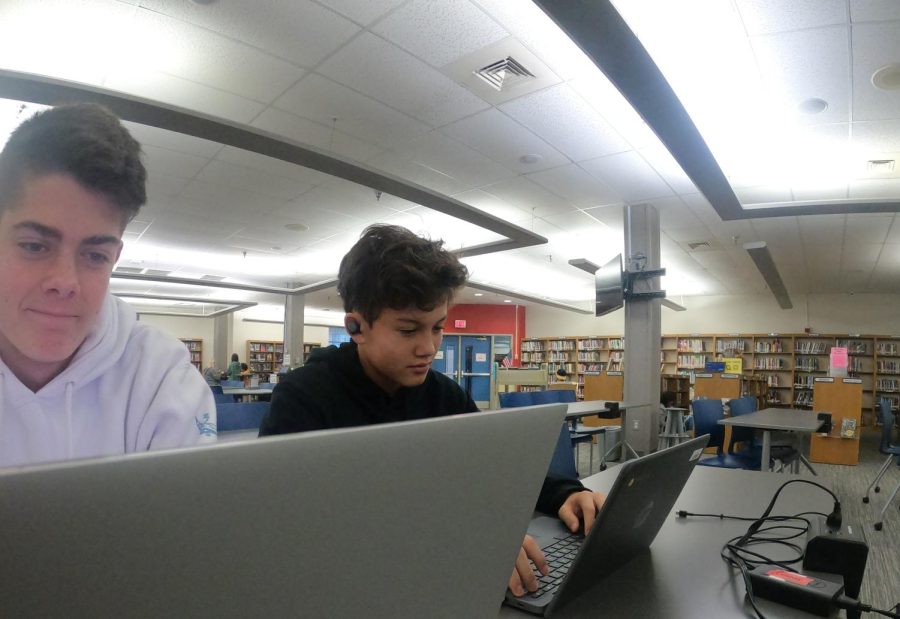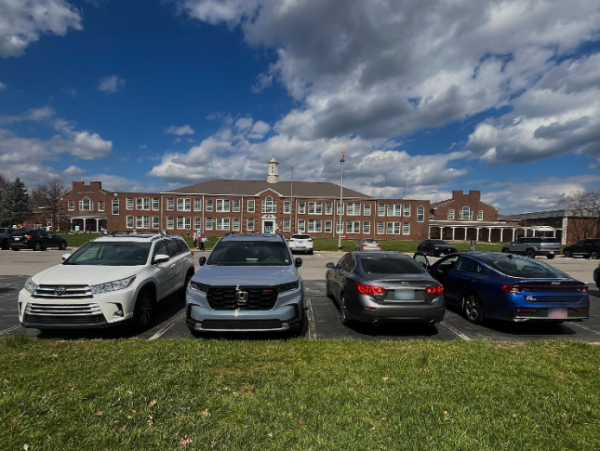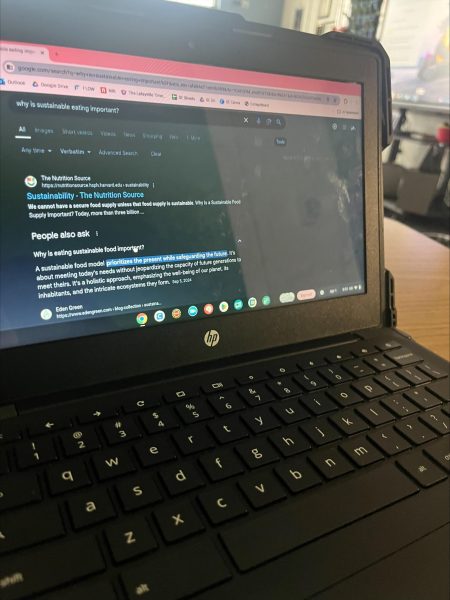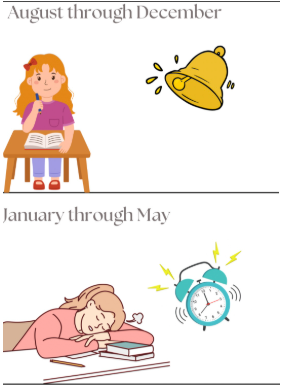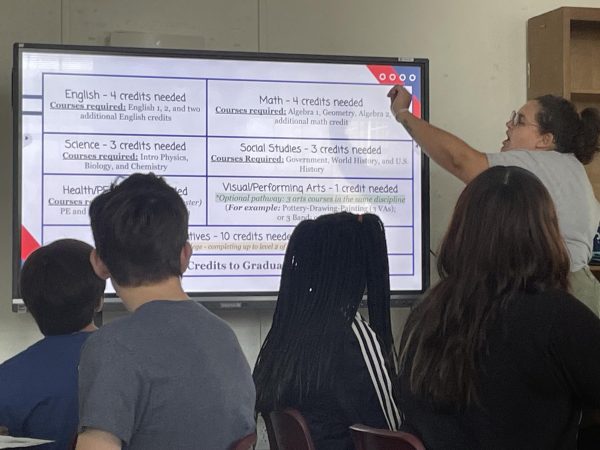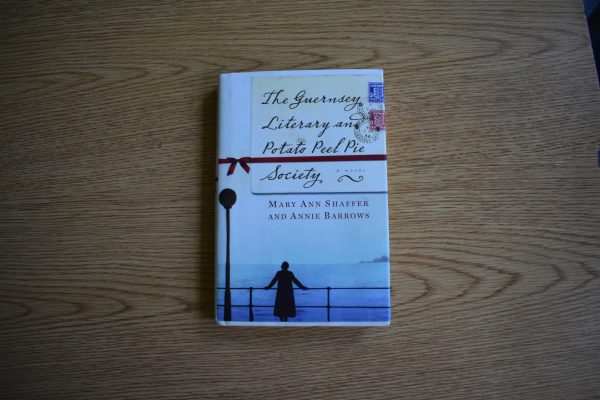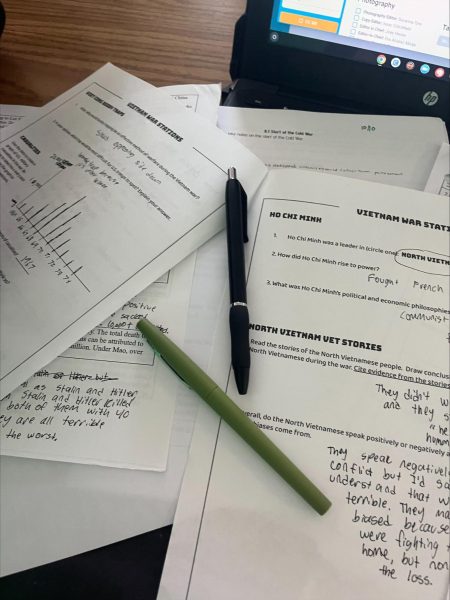Music in Classrooms: Helpful or Hurtful?
Davis Ashmun (Left) and Charles Mooney (Right) working on homework in the library while listening to music.
Many people, including high school students, love listening to music. Many people enjoy listening to music, especially when writing or working on a project. Music delivers many benefits to people, such as a tempo, to get into a workflow and an aid for concentration. These benefits can also apply to students listening to music during school.
Listening to music generally puts students in a better mood. After interviewing students in the hallways of Lafayette High School, 8 out of 10 students said they love listening to music. For most people, doing what they love makes them happy and in a good mood.
Happy students can make for peaceful and pleasant classrooms in the school. Instead of having your first class full of zombies in the morning, it could be full of people bobbing their heads to the beat of the music with smiles on their faces. Another benefit could be better class participation and more creativity in classes. Happy students who are creatively participating in class provide a better learning environment.
Music also helps to keep students focused on their work. Instead of spacing out and staring at a wall for five minutes, music allows students to focus easier on the task at hand.
Logan Gwynn, a freshman at Lafayette, enjoys listening to music at school and described music as something that helps him focus on projects he needs to do. If there were slower parts to an assignment, he said that music helped keep him from becoming distracted from friends or losing focus entirely.
Music also helps students get into their workflows, can eliminate most of the external noise distractions, and let the listener control the sounds they hear. The music canceling noises is good, because it will help the students concentrate on their work. Increased concentration is beneficial while completing worksheets or online problems.
Listening to music while working on projects or assignments in class seems to work out because during that time, students do not have to focus on directions or lectures a teacher may deliver during class.
Music places students in personal bubbles protecting them from outside interference and helps them to be groovy in their workflow. Music always helps me get immersed in a project, and often tends to speed up my tasks.
While there are many reasons to listen to music while working, there are negative consequences. The design of many headphones and earbuds will muffle, or even cancel the outside noise.
In most instances, this is a good thing, but if a teacher is talking to the class, a student may not realize that the teacher is saying something important. For this reason, many teachers only allow students to listen to music while doing independent assignments. This is a fair compromise.
I also tend only to use one earbud rather than two while listening to music during class. One earbud and one open ear allow me to hear if the teacher gives new directions or when the bell rings to signal the end of class. Music during independent work or listening with only one ear is the perfect solution to letting students listen to music during school hours.
Overall, listening to music is good and helps students. While there are disadvantages, such as being unable to hear the outside world, there are many advantages, including increasing good moods and productivity and helping to focus on class-related activities rather than distractions around the classroom. The benefits outweigh the drawbacks, and I believe that more teachers will become lenient when allowing students to listen to music during class. So, to my fellow Generals, I say, “Rock on!”

Wyatt Talboo is a freshman at Lafayette and part of the Pre-Engineering program. Wyatt is a photographer for the Lafayette Times. He enjoys being outside...

